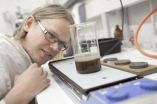(Press-News.org) A*STAR scientists have identified the enzyme, telomerase, as a cause of chronic inflammation in human cancers. Chronic inflammation is now recognized as a key underlying cause for the development of many human cancers, autoimmune disorders, neurodegenerative diseases, and metabolic diseases such as diabetes. This enzyme, which is known to be responsible for providing cancer cells the endless ability to divide, is now found to also jumpstart and maintain chronic inflammation in cancers.
In identifying this enzyme, inflammation can be prevented or reduced, and the common ailments can be alleviated. This discovery has considerable impact on healthcare because developing drugs to target telomerase can greatly reduce healthcare costs.
Currently, the annual costs and expenses associated with cancer and metabolic diseases such as diabetes amount to about $132 billion in the US alone . Although many safe and effective anti-inflammatory drugs such as aspirin are currently available on the market, these drugs sometimes have side effects because blocking inflammation is typically detrimental to normal physiology. Hence there exists a need for the development of cost-effective drugs that are targeted, so as to minimize side effects.
This collaborative research was conducted by scientists at A*STAR's Institute of Molecular and Cell Biology (IMCB) led by Assoc Prof Vinay Tergaonkar, A*STAR's Genome Institute of Singapore (GIS) and National University of Singapore. Other clinical collaborators include Cancer Science Institute of Singapore and Duke-NUS Graduate Medical School. The research findings were published on Nov. 18, 2012, in the prestigious scientific journal, Nature Cell Biology.
The team identified that telomerase directly regulates the production of inflammatory molecules that are expressed by NF-kB, a known master regulator of chronic inflammation. These molecules are critical for inflammation and cancer progression. By inhibiting telomerase activity in primary cancer cells obtained from patient samples, the scientists found that levels of IL-6, an inflammatory molecule known to be a key driver of human cancers, was reduced in expression as well. This is an important breakthrough that shows how targeting telomerase with drugs could potentially reduce inflammation, and hence get rid of cancer cells.
Dr Tergaonkar said, "These findings provide a unifying explanation for a decade worth of observations from leading laboratories in the field which show that chronic inflammation and telomerase hyperactivity co-exist in over 90 percent of human cancers. What we show that these two activities are actually interdependent. They also may lead to potentially novel drugs that will target a range of human ailments with inflammation as an underlying cause, which range from arthritis to cancer."
Prof Hong Wan Jin, Executive Director of IMCB, said, "The discovery speaks for the exceptional power of identifying novel mechanisms that have translational potential, through close collaborations among scientists in different A*STAR institutes, as well as to bring together both basic and clinical research scientists in Singapore. I am confident that we can expect more discoveries like this from Dr Tergaonkar's team."
INFORMATION:Notes for Editor:
The research findings described in this media release can be found in the 18 November online issue of Nature Cell Biology, under the title, "Telomerase directly regulates NF-kB-dependent transcription" by Arkasubhra Ghosh1, Gaye Saginc2, Shi Chi Leow1, Ekta Khattar1, Eun Myong Shin1, Ting Dong Yan3, Marc Wong1, Zhizhuo Zhang4, Guoliang Li5, Wing-Kin Sung4,5, Jianbiao Zhou6, Wee Joo Chng6, Shang Li3, Edison Liu2 and Vinay Tergaonkar1,7
1 Laboratory of NF-kB Signaling, IMCB, Proteos, 138673, Singapore
2 Cancer Biology and Pharmacology, Genome Institute of Singapore, 138672, Singapore
3 Program in Cancer and Stem Cell Biology, Duke-NUS Graduate Medical School, 169857, Singapore
4 School of Computing, National University of Singapore, 119077, Singapore
5 Computational and Systems Biology, Genome Institute of Singapore, 138672, Singapore
6 Cancer Science Institute of Singapore, 119074, Singapore
7 Correspondence should be addressed to: Vinay Tergaonkar (vinayt@imcb.a-star.edu.sg)
AGENCY FOR SCIENCE, TECHNOLOGY AND RESEARCH (A*STAR)
For media queries and clarifications, please contact:
Vithya Selvam (Ms)
Senior Officer, Corporate Communications
Agency for Science, Technology and Research
Tel: (+65) 6826 6291
Email: vithya_selvam@a-star.edu.sg
About the Agency for Science, Technology and Research (A*STAR)
The Agency for Science, Technology and Research (A*STAR) is the lead agency for fostering world-class scientific research and talent for a vibrant knowledge-based and innovation-driven Singapore. A*STAR oversees 14 biomedical sciences and physical sciences and engineering research institutes, and six consortia & centres, located in Biopolis and Fusionopolis as well as their immediate vicinity.
A*STAR supports Singapore's key economic clusters by providing intellectual, human and industrial capital to its partners in industry. It also supports extramural research in the universities, and with other local and international partners.
For more information about A*STAR, please visit www.a-star.edu.sg.
Stretching across central Africa, the Congo Basin forest is the second largest tract of rainforest in the world and a lifeline for more than 60 million people – providing food and income for many remote communities, storing huge amounts of carbon, supporting unique ecosystems and regulating the flow of the major rivers across Central Africa. Yet the Congo's forests are being cleared at an alarming rate amid global demand for the continent's minerals, energy and wood resources. Current methods and rates of extracting these resources are unsustainable and threatening the ...
TORONTO, Nov. 21, 2012-- New research has found there are several different ways that kidney tumours can achieve the same result – namely, grow.
Scientists have been trying to figure out how different people have kidney tumours with the same histology, or shape, although the genetic changes can vary among individual tumours.
Solving that puzzle could have implications for the diagnosis and treatment if kidney cancer, which has 35 per cent mortality rate and is becoming more common. Despite advances in early detection and treatment, the mortality rate hasn't changed in ...
Published in the Comunicación journal, a study conducted by the University of Seville analyses violence content in Spanish TV series. It concludes that Telecinco's Sin tetas no hay paraíso is the most violent of the five studied.
Despite the fact that other series have more scenes or minutes of violence, according to the study, the Telecinco series is more powerful in its transmission of values that are more detrimental to youngsters in terms of their perception of aggressive behaviour and its consequences.
Sara González, the author of the study, explains to SINC ...
A consortium of researchers led by WMG at the University of Warwick are to embark on a £3 million research programme called "Cleaning Land for Wealth" (CL4W), that will use a common class of flower to restore poisoned soils while at the same time producing perfectly sized and shaped nano sized platinum and arsenic nanoparticles for use in catalytic convertors, cancer treatments and a range of other applications.
A "Sandpit" exercise organised by the Engineering and Physical Sciences Research Council (EPSRC) allowed researchers from WMG (Warwick Manufacturing group) at ...
In order to find out about its migrations, various research centres in South Africa, Sweden, Canada, Chile, Australia, Spain, Argentina and Switzerland have conducted research detailing its routes and expansion periods. A significant new fact has emerged and it is that the wasps returning to Europe from Chile and South Africa have undergone a genetic micro-evolution which makes them more resistant to their natural European enemy, a nematode that sterilises them.
The Sirex noctilio wasp is regarded as a secondary pest in Europe because in this geographical area there is ...
"Methods are required that take the social and environmental impacts of business operations better into account, both within the company and among its network of partners and stakeholders," says Uusitalo. "If a change cannot be effected, the current unsustainable way of life will continue, and we might also miss some opportunities for creating new business. Market share is at stake here."
According to Uusitalo, other companies and customers demand that companies take a wider view of sustainable development.
"Legislation will also inevitably lead development in this ...
This press release is available in German.
They dominated the earth for 200 million years and numerous different species can still be found all over the world: mosses, horsetails and ferns. Researchers from the Max Planck Institute for Chemical Ecology in Jena, Germany, have now found out that bracken ferns (Pteridium aquilinum) do not release any volatiles when they are attacked − unlike many of the now dominant and evolutionary younger flowering plants. Such an emission of volatile compounds may attract the pest insects' enemies, such as ichneumon wasps or ...
Researchers at Aalto University have developed a simple method for reducing the amount of phosphorus in the wastewater of a pulp mill. The method is called simultaneous precipitation using iron sulphate. A separate treatment stage is not required, as the precipitation takes place simultaneously with the actual biological wastewater treatment.
Iron sulphate is added to the wastewater prior to the biological wastewater treatment process, and the phosphorus dissolved into the water is precipitated with the biomass at the treatment plant. Finally, the phosphorus is removed ...
Trust rather than lust is at the heart of the attention to detail and finely made form of handaxes from around 1.7 million years ago, according to a University of York researcher.
Dr Penny Spikins, from the Department of Archaeology, suggests a desire to prove their trustworthiness, rather than a need to demonstrate their physical fitness as a mate, was the driving force behind the fine crafting of handaxes by Homo erectus/ergaster in the Lower Palaeolithic period.
Dr Spikins said: "We sometimes imagine that early humans were self-centred, and if emotional at all, that ...
CAMBRIDGE, MA -- Each winter, wide swaths of the Arctic Ocean freeze to form sheets of sea ice that spread over millions of square miles. This ice acts as a massive sun visor for the Earth, reflecting solar radiation and shielding the planet from excessive warming.
The Arctic ice cover reaches its peak each year in mid-March, before shrinking with warmer spring temperatures. But over the last three decades, this winter ice cap has shrunk: Its annual maximum reached record lows, according to satellite observations, in 2007 and again in 2011.
Understanding the processes ...


